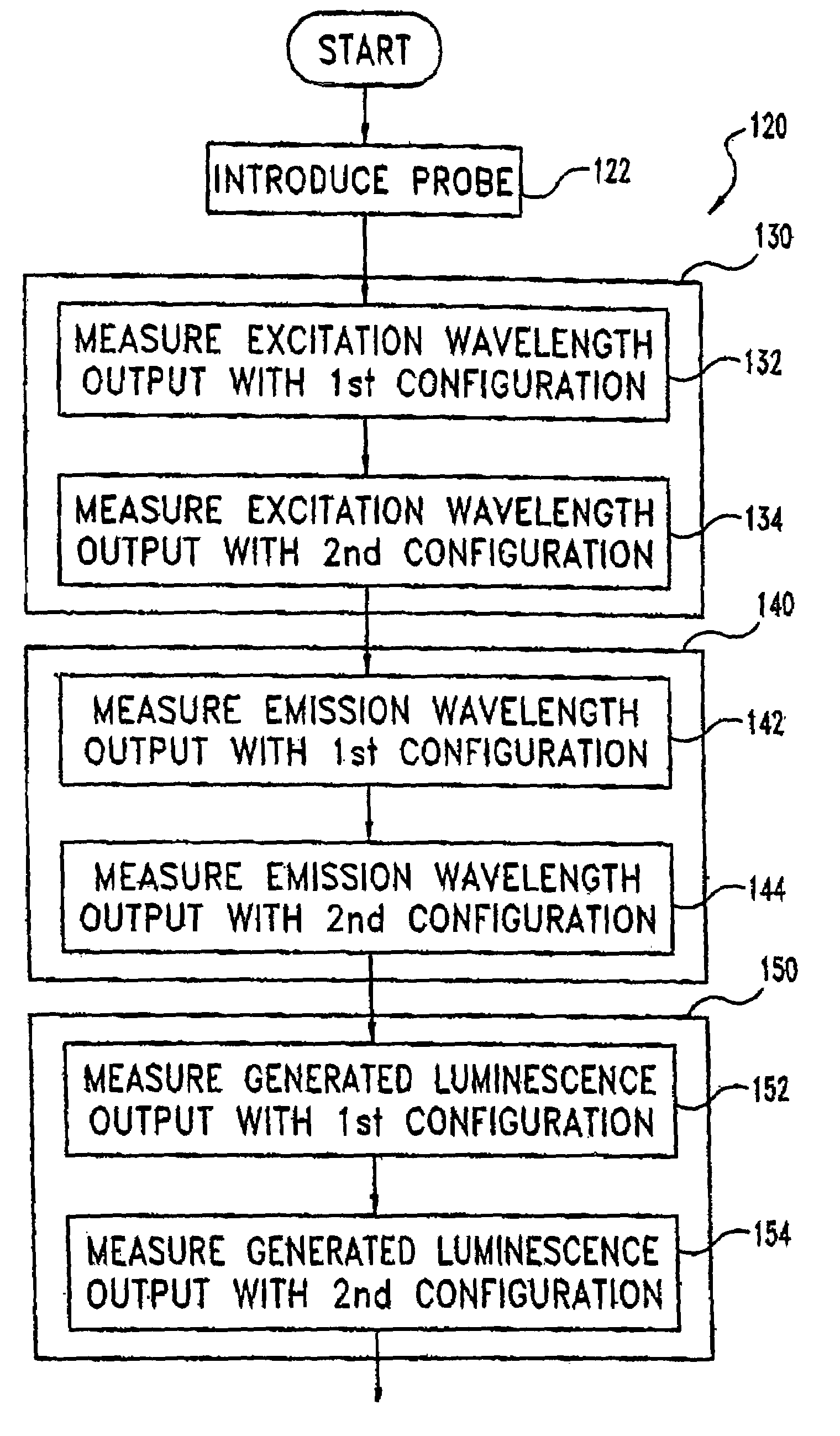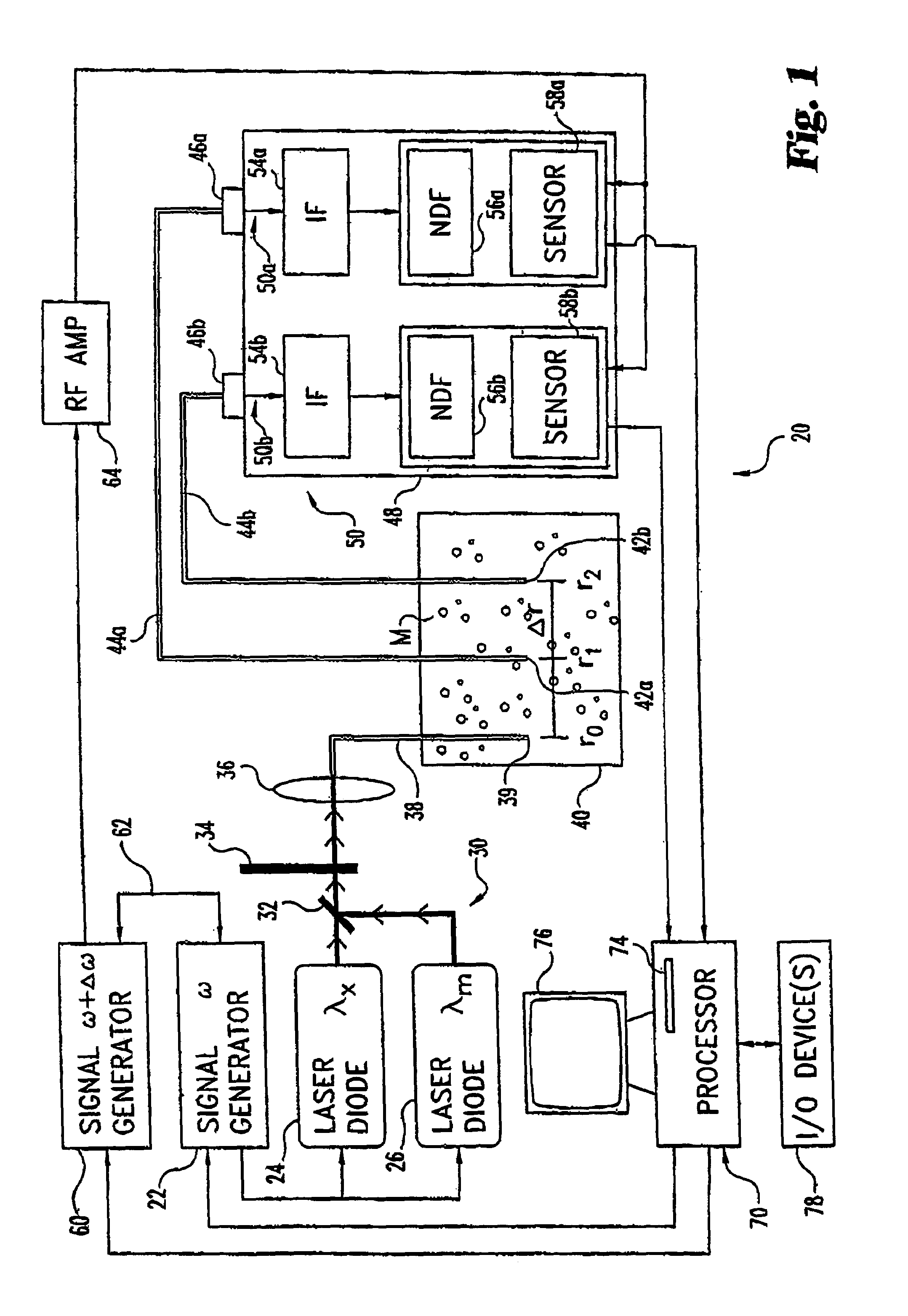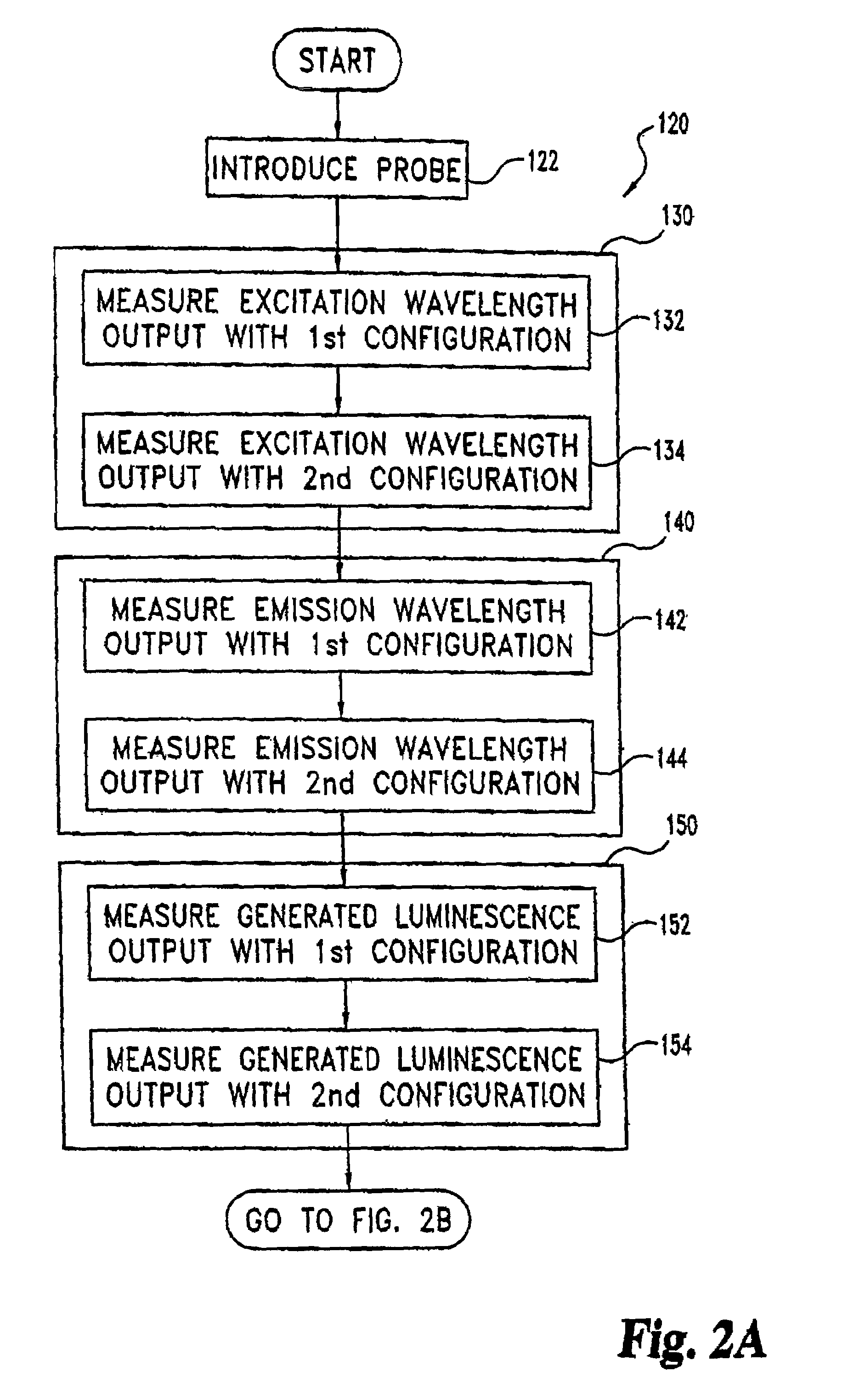Characterization of luminescence in a scattering medium
a luminescence and scattering medium technology, applied in the field of luminescence spectroscopy, can solve the problems of difficult to obtain quantitative lifetime measurements of such probes, affecting other applications of luminophore probes, and light scattering hampering other applications,
- Summary
- Abstract
- Description
- Claims
- Application Information
AI Technical Summary
Benefits of technology
Problems solved by technology
Method used
Image
Examples
experimental examples
[0086]The present invention will be further described with reference to the following specific examples. These experiments and results are intended to be illustrative of the present invention and should not be considered limiting or restrictive with regard to the scope of the present invention. Further, any theory, mechanism of operation, proof, or finding stated herein is meant to further enhance understanding of the present invention and is not intended to make the present invention in any way dependent upon such theory, mechanism of operation, proof, or finding.
[0087]Several experiments were conducted with a test setup comparable to system 20. FDPM measurements according to process 120 were conducted in a light scattering tissue-simulating phantom from of medium M. For these experiments the lifetimes of different micromolar concentrations of two luminophors of the fluorescent type where evaluated: (1) 3,3′-Diethylthiatricarbocyanine Iodide (DTTCI) and (2) Indocyanine Green (ICG o...
PUM
 Login to View More
Login to View More Abstract
Description
Claims
Application Information
 Login to View More
Login to View More - R&D
- Intellectual Property
- Life Sciences
- Materials
- Tech Scout
- Unparalleled Data Quality
- Higher Quality Content
- 60% Fewer Hallucinations
Browse by: Latest US Patents, China's latest patents, Technical Efficacy Thesaurus, Application Domain, Technology Topic, Popular Technical Reports.
© 2025 PatSnap. All rights reserved.Legal|Privacy policy|Modern Slavery Act Transparency Statement|Sitemap|About US| Contact US: help@patsnap.com



